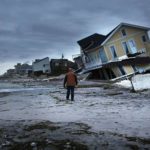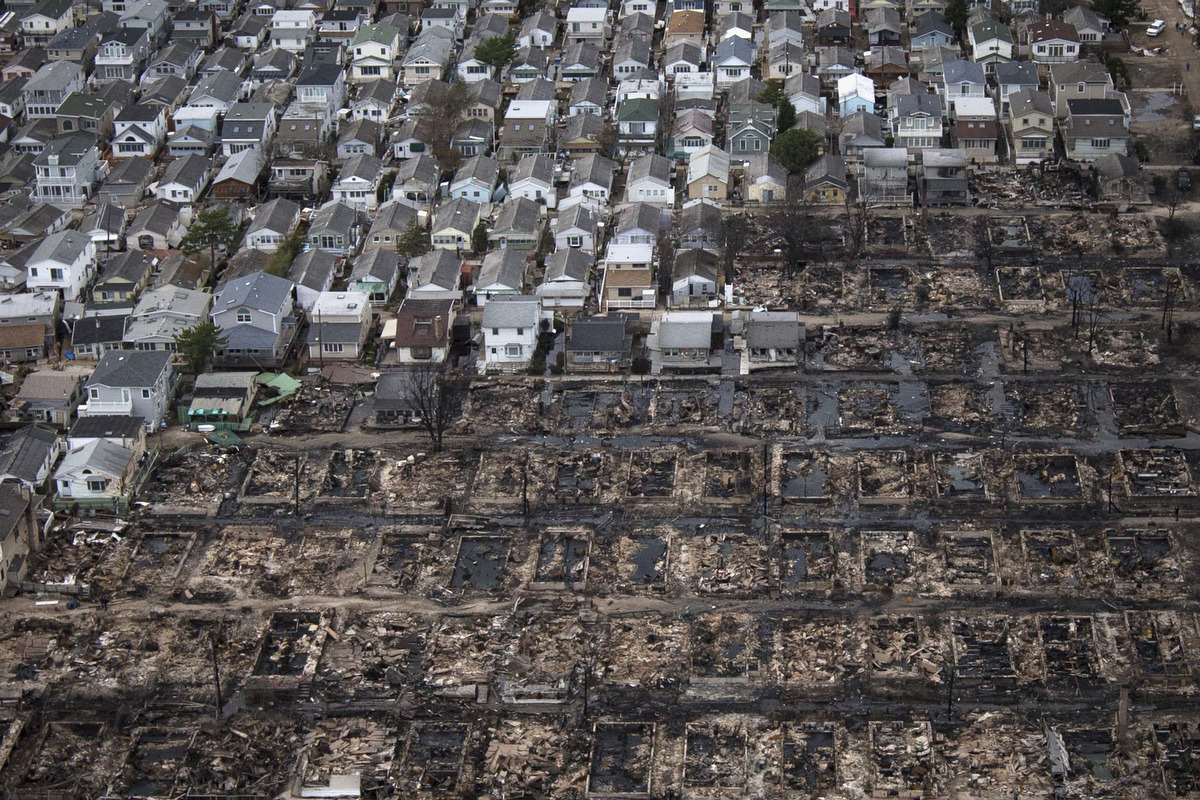(The Verge) – On April 10, Monmouth University’s Institute for Global Understanding hosted a panel about the aftermath of Superstorm Sandy and the impacts after the storm on real estate, tourism and beaches of the Jersey Shore. This was a part of Monmouth’s week long Global Understanding conference, which allows students and faculty from different backgrounds and studies examine global issues.The event was hosted by the Polling Institute, Urban Coast Institute and the Kislak Real Estate Institute. The presentation showed that although there were many negatives that the storm brought, there were some positives that came out in the storm.
The panel began with a discussion about Superstorm Sandy as it unfolded, and some statistics that surveyed New Jersey residents from different parts of the state. According to Liz Cooner, Assistant Director of the Polling Institute, the storm was 820 miles wide and 62 percent of New Jersey residents thought the storm was more serious than forecasted, according to Monmouth University’s Polling Institute.
Statistics were also given for satisfaction of different services during Superstorm Sandy. New Jersey residents felt that 79 percent of police departments and first responders were at least satisfactory. A 71 percent satisfaction rate was given to utilities, 69 percent to town governments, 66 percent to state governments. Cable and Internet providers were given a 62 percent rating. County and federal governments ranked lower with 55 percent and 51 percent respectively. Cable and Internet providers
Since the title of the seminar was “Sandy’s Silver Lining,” Cooner did point out some positive statistics that were taken a few months after the storm. However, 75% of New Jersey residents surveyed believe that the storm made people act their best.In addition, there were no deaths reported in Monmouth County.
People were also more than willing to “Restore The Shore” in multiple ways. 57 percent of New Jersey residents donated food for Sandy relief, while one out of four surveyed volunteered their time in a devastated area.

Image Taken From: CNN.com
Another positive impact is the tourism statistics that came out this year. 71 percent of people who have visited the Jersey Shore plan to visit this year, which is the highest since 2007. However, 43 percent plan on spending less than one week at the shore, which a sign of a lack of rentals and hotels for this summer.
Tony McDonald, Director of the Urban Coast Institute, discussed about the future of the Jersey Shore and how the region needs to adapt to climate change. He says that according to FEMA, the storm caused an estimated $29.4 billion in damage. 34% of the state’s residents lives in the four coastal counties (Monmouth, Ocean, Atlantic and Cape May).McDonald also talked about future issues that could arise. He said that Superstorm Sandy “re-opened Climate Change debate” of climate change and that the Jersey Shore not only has to re-build in the short term, but adjust to a new normal. “If we were to build in the same way, you will have some problems,” warned McDonald. He also added that since the storm took away dunes and rock walls that protected areas from flooding, even smaller rain storms can cause flooding in areas that never flooded before Sandy.
The big question McDonald posed to the audience was how are these shore towns going to adapt to what storms will come in the future?
McDonald then discussed how sea rise issues related to global warming are yet another reason for people in coastal areas to start raising their homes higher. A map from NOAA showed that just a 1-2 ft. increase in sea level can cause what would currently be considered category three damage in a category one storm.
To combat this issue, McDonald offered suggestions to the audience on how towns can protect themselves from future floods. One way was that towns can raise the grade of their entire town by a few feet. This would allow shore areas to rebuild in the same way that the town is currently built.
Other ways towns can re-build include having homeowners build their houses on stilts, building higher sand dunes and installing breakaway lattice on the lower floors of houses, and building on higher floors.
So what is the silver lining for these towns? Thanks to improved technology and science, we can begin to take action now and identify many adaptation management methods. According to McDonald, people in these towns finally have “the moral compass to care about the future.”

Peter Reinhardt, director of the Kislak Real Estate Institute, discussed the process since hosting a program on December 7 about real estate at the Jersey Shore after Sandy.
According to Reinhardt, there will be issues for towns to get revenue because of the lack of homes and hotels by the coast still damaged. Heather Moffit, a realtor from Citta & Moffit Realtors in Toms River, said that even though the boardwalk will be ready this summer, vacation home rentals are down by 37 percent. Eric Birchler, of Lavallette, has also reported that many people are trying to “wait and see” if there will be more progress made before the beaches open.The silver lining for this is that even though people are waiting to see the progress that is done, 71 percent of those surveyed plan to visit the Jersey Shore at some point. This will help local businesses out because they will now be able to gain money from those visiting the devastated area, even if the real estate market is bleak. In addition, people will now be able to afford ocean front housing and build a custom floor plan.
Superstorm Sandy was one of the costliest storms to ever hit the United States. The Jersey Shore was the hardest hit area, and homeowners along the coast are scrambling to find a way to protect their properties from future storms and possible sea rise.




